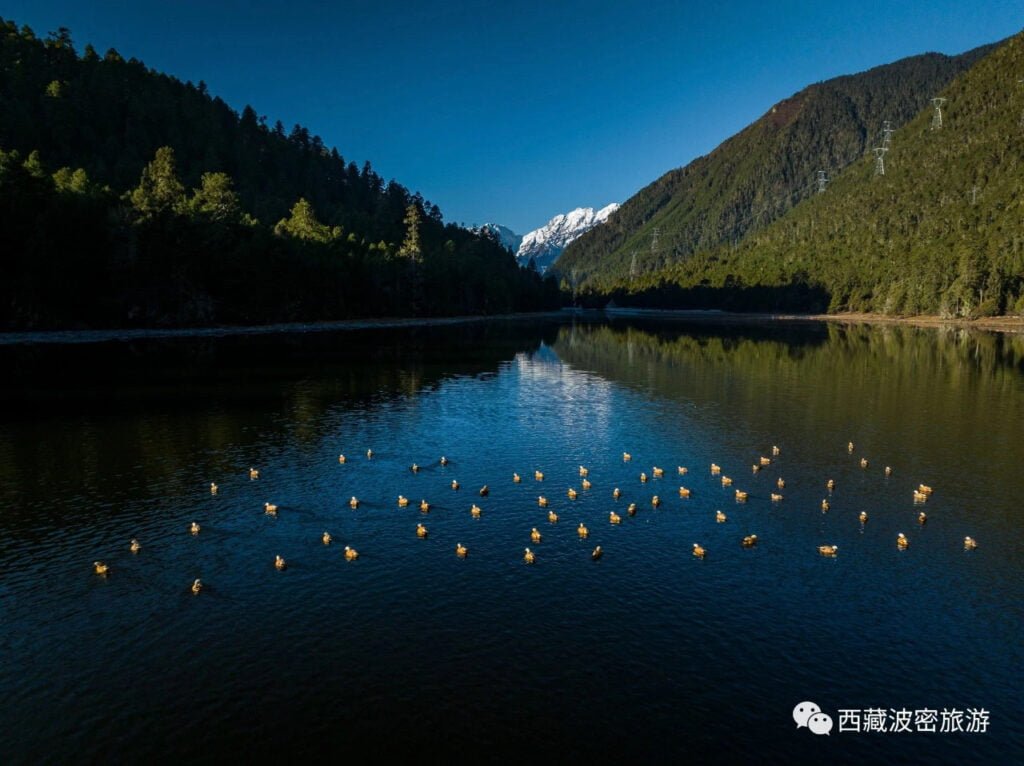Yadong Valley: A Natural Jewel of Tibet
Location and Geography of Yadong (Domo Valley)
Yadong Valley, known as “Dromo lung” in Tibetan, is the gorge of the Yadong River located south of Pari Town in Yadong County, Tibet. Stretching over 70 kilometers, the valley spans from the mouth of Nathua Mountain and the exit of the Yadong River at the China-India border in the south, extending north up to Pari Town. The elevation ranges dramatically from 4700 meters to 2400 meters, creating a striking descent of over 2000 meters. The journey from Pari Town at an elevation of over 4700 meters, passing through Upper Yadong Township, and reaching the county seat of Sharsingma Town(གྲོ་མོ་ཤར་གསིང་མ་) (46 kilometers away at 2945 meters) showcases a diverse array of vegetation, from alpine meadows to shrubs and towering forests.

Scenic Beauty and Biodiversity of Yadong
Nestled on the southern foothills of the Himalayas, Yadong Valley is surrounded by mountains, bordering Bhutan to the east and Sikkim to the west. Renowned as the “Little Sothern valley of Tibet” for its picturesque landscapes, some also associate the northern end of Yadong Valley with the ancient “Red River Valley,” famously depicted in a movie. The valley is characterized by a fast-flowing river reminiscent of the landscapes along Sichuan’s roads.
Influenced by the warm currents from the Indian Ocean, Yadong Valley enjoys evergreen scenery throughout the year. The hills are adorned with colorful shrubs, especially enchanting in autumn, echoing the charm of Jiuzhaigou. Descending along the valley, the vegetation transitions from purple-gray shrubbery to broadleaf forests, eventually giving way to towering trees. The lush primeval forests on both sides of the valley are home to a variety of rare wildlife, including the Himalayan langur, red-breasted hill partridge, leopard, snow leopard, brown bear, and wild yak.
The Splendor of Yadong Valley
Majestic Snow Peaks and Glaciers in Domo
Yadong Valley, nestled between two snow-capped mountains, is a testament to nature’s grandeur. The towering snow peaks reach into the clouds with a commanding presence. Glaciers in the valley, illuminated by the sun, resemble silver dragons dancing through the landscape. The clouds wrapping around the mountainsides further enhance the enchanting beauty, adding a dynamic element to the picturesque snow mountains.
The Rushing Yadong River
Flowing through the valley is the Yadong River, known for its rapid currents. The riverbanks boast a landscape reminiscent of the scenic views along Sichuan’s roads, offering a blend of tranquility and untamed natural beauty.
High Alpine Lake of Domo (Yadong) Valley
Beneath the snow mountains lies a long alpine lake, crystal clear and multi-colored. The interplay of sunlight, blue sky, and snow-capped peaks create a stunning palette of light blue, dark blue, light green, dark green, and ink green hues. This mystical lake is a haven for unnamed waterbirds and playful ducks. The shores are lush with green grass and dotted with colorful wildflowers, while cattle, sheep, tents, and herdsmen scatter peacefully, composing a serene pastoral scene.
Phari Grassland’s Floral Tapestry
In summer, the Pari Grassland blooms with a vibrant array of flowers, earning it the nickname “Five-Colored Meadow.” This area is alive with the presence of herdsmen and their flocks of sheep and cattle, particularly noted for the unique Phari yaks. These yaks are large, with bright fur, known for their high meat and milk yield, delicious taste, and rich nutrition. They are famously described as “drinking spring water and eating cordyceps.” Visitors during festivals can witness the exuberant display of horse racing and yak archery, showcasing the local enthusiasm and culture.
Sharsingma Ancient Town
Once a key trading hub on the land route, known as “Little Hong Kong,” Shasima comes from the Tibetan translation meaning “marshy grassland to the east.” The traditional houses here, mostly two or three-story wooden buildings, exude simplicity and sturdiness. Following the opening of the Nathula Mountain pass and the establishment of the Rinchen Gang border trade market near Lower Dromo Township, Sharsingma’s role as an international commercial center diminished. However, its old buildings still retain an ancient charm, preserving the history and culture of the region.
Exploring the Pristine Forests and Wonders of Lower Yadong
Lower Yadong’s Primeval Forests
Just 12 kilometers from Yadong County town lies the pristine forests of Lower Yadong. This area, home to the “First Outpost of the Southwest” at Nathula, is shrouded in ancient pines and mist. Driving through the winding mountain roads amidst clouds, visitors are greeted with lush greenery and fresh air, creating an almost ethereal, fairy-tale experience. The forest, with its towering old trees, cascading waterfalls, bird songs, fragrant flowers, and temperate climate, is an ideal destination for relaxation and tourism.
The Beauty of Yadong Valley
Locals often say, “Without visiting Yadong Valley, one does not know the beauty of the plateau.” Indeed, the charm of Yadong unfolds in its full glory only upon arrival. From a vantage point, Yadong town appears like a dazzling pearl nestled in the majestic Himalayan mountains, drawing visitors from far and wide with its unique allure.
Travel Tips
- Historic Nathula Pass: At the southern end of Domo Valley, the Nathula Mountain Pass was once a major route of the Southern Silk Road. After the 1962 Sino-Indian border conflict, the border trade route was closed. It was reopened on July 6, 2001, restoring nearly 40 years of suspended border trade between China and India. This pass is currently the only trade route along the China-India border.
- Kagyu Monastery: On the way to Nathula border trade market from Lower Yadong Township, travelers can visit Kagyu Monastery, the closest monastery to the China-India border. This historical and cultural landmark, established in 1747, has been home to 11 generations of Living Buddhas.
- Yadong’s Unique Climate: Yadong County, along with Zayu and Methok Counties, are special areas in Tibet located on the southern slopes of the Himalayas. Each has long valleys heavily influenced by the Indian Ocean’s warm currents, resulting in abundant rainfall and rich vegetation.

